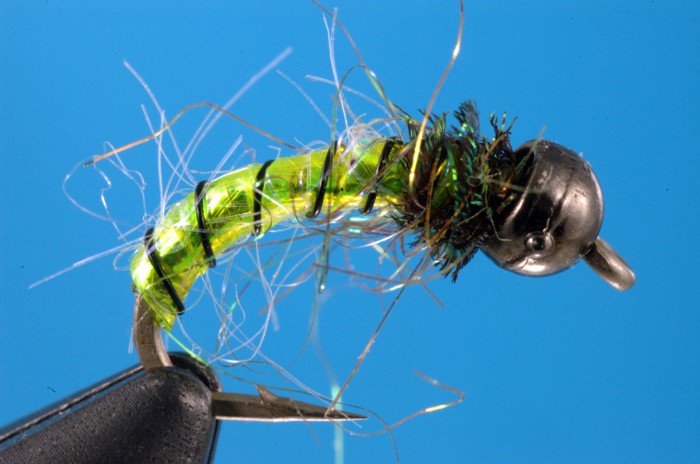Caddis Flies
In my insular world Caddis mostly means Mother's Day Caddis, October Caddis and the early Summer swarms that usually start appearing as evening flights during Salmon Fly time. Those evening Summer bugs are a tad larger and a bit browner than the slightly smaller grayer Mother's Day Caddis. For all of them you can take your pick: fish soft hackle wet flies or fish dry flies.
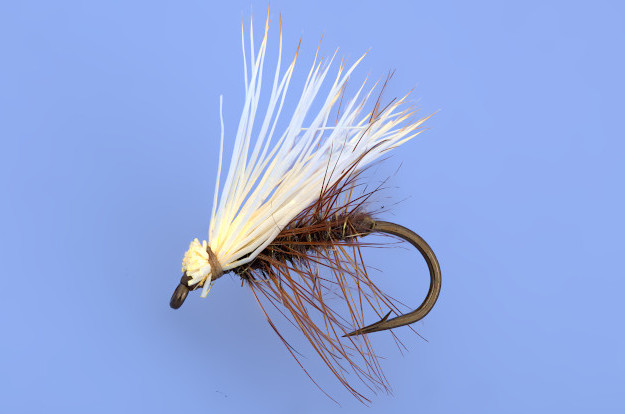
I first learned about Summer evening Caddis at Salmon Fly time back in the early 1980s, drifting Rock Creek up near Phillipsburg Montana. Drift boats are only allowed there in the early season because Rock Creek gets too small for them from July on. In the early season Rock Creek is fast, narrow, brush-choked and dangerous to wade. During high water you need to know what you are doing because the river bends a lot and you never know when a sudden portage-requiring log jamb will happen. Rock Creek is so fast then it's like an arcade game. You only get one cast at each pocket and they go by so quickly it isn't easy.
When it gets close to dark the fish have usually been off the big Sallmon Flies for most of the afternoon. But then the brown caddis start to get thick, below the willow branches. Despite all the Salmon Fly hype the evening Caddis Fly fishing is often the highlight of the day.
My lifelong fishing buddy Randy Dix once did Rock Creek at Salmon fly time, in a raft. He got greedy at one point, when the caddis were on, and let his neopnyte fishing parter row. They went around a fast blind corner and immidately got flipped and pushed under by a log jamb. Randy said he stayed under so long he started to fade and accepted his demise. His body relaxed and fell limp, while expecting to travel off. A second later he came out the other side and started to swim. They never saw that raft again. High water is fun. But tricky. And dangerous too.
Almost everybody fishes the Al Troth Elk Hair Caddis. It is one of the all-time flies. I got to watch Al tie his Elk Hair Caddis at few times in person, at the old Troutfitters shop in Bozeman. Al's passing was a great loss for us all. Are there any shortcomings in the Elk Hair Caddis? It floats well and it's easy to see from a distance. Maybe it sits a bit higher up than a real caddis. Creative tiers have put a lot of design effort into reimagining the Classic Catskill mayfly dry fly so it rests lower and closer to the sufface film. Is that a worthy goal for dry fly Caddis patterns too?
X-Caddis
The X-Caddis is the most popular of the lower-posture, not Troth Elk Hair Caddis. Developed by John Juracek and Craig Mathews back in the late 1980s this fly is a bit like a Troth Elk Hair Caddis with an added Zelon tail, somewhat like a Sparkle Dun tail, with the Palmered body hackle taken away, so it sits lower and closer to the surface tension. Any loss of floatation attributed to the missing Palmer hackle over the body is largely made up by the addition of the bushy Zelon tail. This is a very good fly.
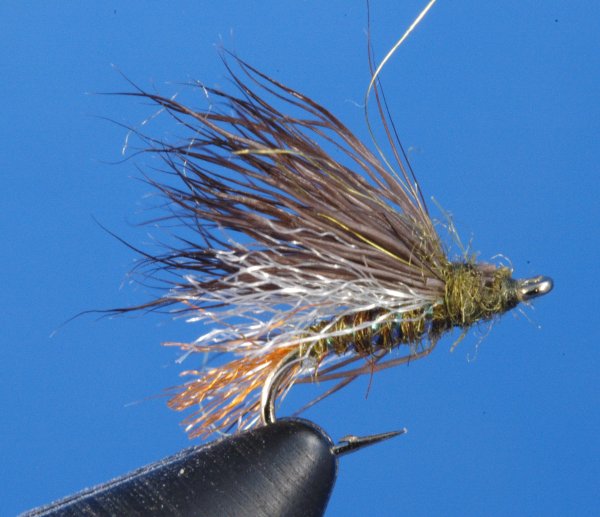
I asked George Kelly about the idea of Al Troth's Elk Hair Caddis sometimes riding a bit too high on water. George said: "Sometimes. You bet. For Black Caddis on the Big Horn you do need a lower-riding fly.". George was adamant. For Black Caddis on the Horn you need a lower profile. And black too. This one was tied by Tom Travis, of Livingston Montana.
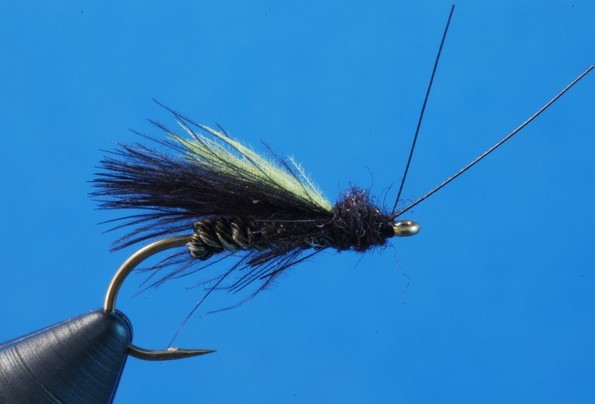
Ralph Cutter's E.C. Caddis is perhaps the best known of the lower profile patterns. It's a design more than a pattern. You can make an EC Caddis in any color you want. Big or small. The EC Caddis is a nifty design whose tilted parachute pushes the body of the fly down into the surface tension some, a bit like a slightly Klinkhammer style caddis emerger. It can be a bit hard to see on the water.
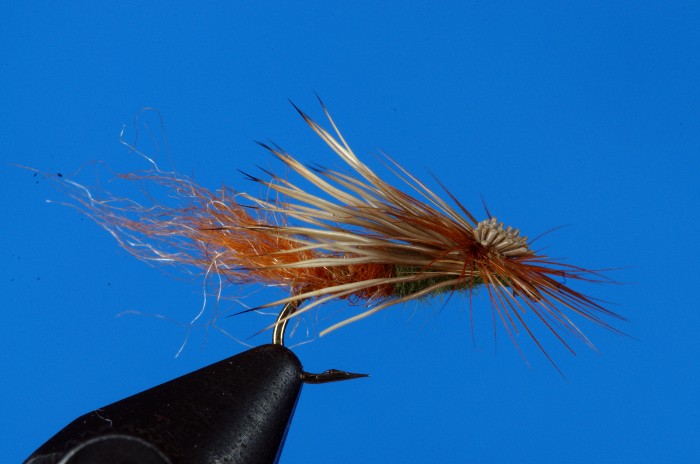
I have a flat, low-to-the-water pattern I call the Paraducks. Mine is similar to the EC Caddis but different. Mine sits so flat to the water it too can be hard to see. I sometimes fudge that by using a white wing.
Gary LaFontaine and many others tie nifty Caddis Pupae patterns, but when it comes to Caddis as a wet fly I've never felt the need for anything more than a Syl Nemes's style soft hackle wet.
Like the mayflies caddis flies have four major stages in their life cycle: egg, larva, pupa and flying adult. Unlike mayflies with caddis there is only one instar as a winged and flying adult. There are two pre-adult aquatic stages: larva and pupa. The pupal stage is transitory, lasting only a short period as the larva gradually rearranges itself, drifts upward to the surface and emerges as a flying adult. For most caddisflies the larval stage exists as worm-like creature living inside a tubular case, made from sand or stream-bottom vegetable detritus. Case building caddis are so well protected they do not become an important trout food.
.........Rhychopphalaieaa...........mf ....also some factoriing. Gary LaFontaine no need for anything but Syl Nemes appears twice?
There is however an important family of net-spinning (rather than case-building) caddis known as the Hydropsychidae. The net-spinning caddis larvae tend to be large and they do become separated from their safety nets often enough to become an important trout food. Stomach contents studies confirm that much, as does a remarkable youtube video https://www.youtube.com/watch?v=K2Z_G1skm6A of Bob Jacklin catching a ten pound brown trout a short distance up from Quacke Lake on the Madison. Bob caught that fish an a Green Rock Worm, which is old-timey Hydropsychidae pattern. Green Rock Worms go all the way back to Frans Pott in the 1920s. The Green Rock Worm is a mojo fly.
The one really imporant family of Caddis Larvae patterns revolve around the net-spinning Hydropsychicae Caddis. They are ubiquitous, as both brown and bright green larvae. Bob Jacklin has a hall of fame video of himself catching a ten pound or so brown above Quake Lake. On a Green Caddis Worm. Wet fly fishig the big rivers in Montana without a few Green Caddis worms is a big mistake.
When it comes to Caddis as a wet fly I've never felt the need for anything more than a Syl Nemes's style soft hackle wet. Gary LaFontaine and many others tie nifty Caddis Pupae patterns. I'll try to find a photo of someone else's fly. I never tie them for some reason.
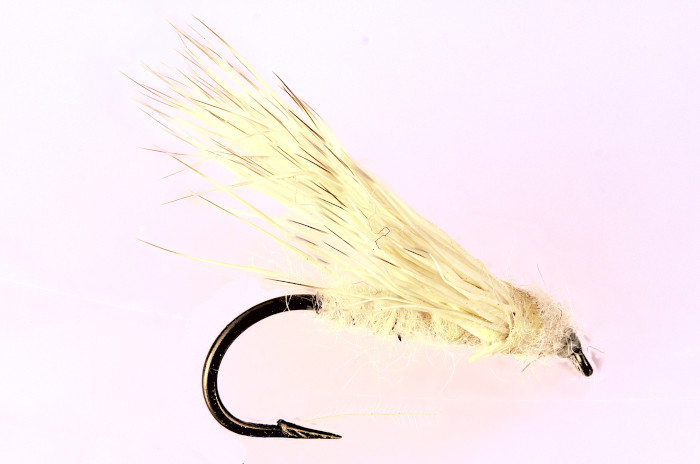
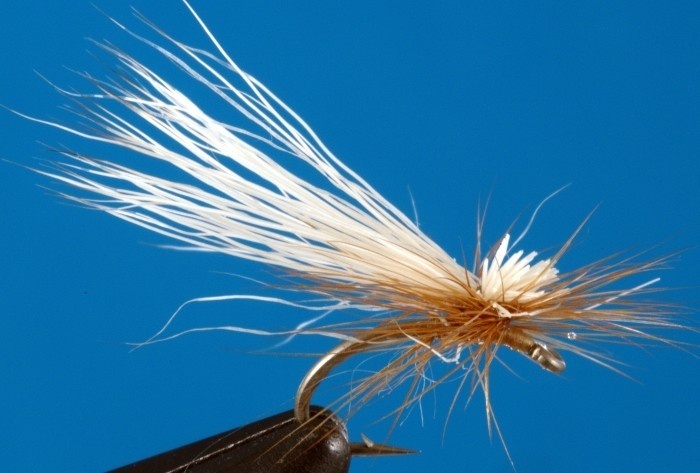
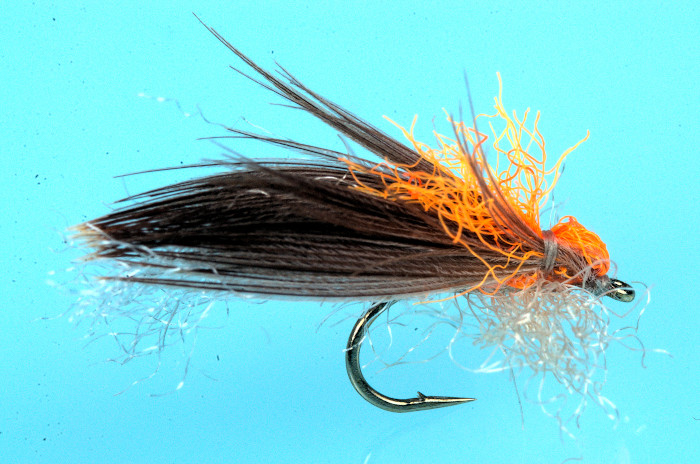
If you want to fish wet flies when Caddis are fluttering many tiers make what amounts to emerger imitations, usually referred to as Caddis Pupae . Gary LaFontaine popularized Caddis Pupae with his book Caddisflies. I'm usually content to use an appropriately-colored soft hackle wet fly. In an earlier dry fly context I argued color might matter. A little anyway and moreover it cannot in any way hurt your chances. So I do my best to match the natural coloring.
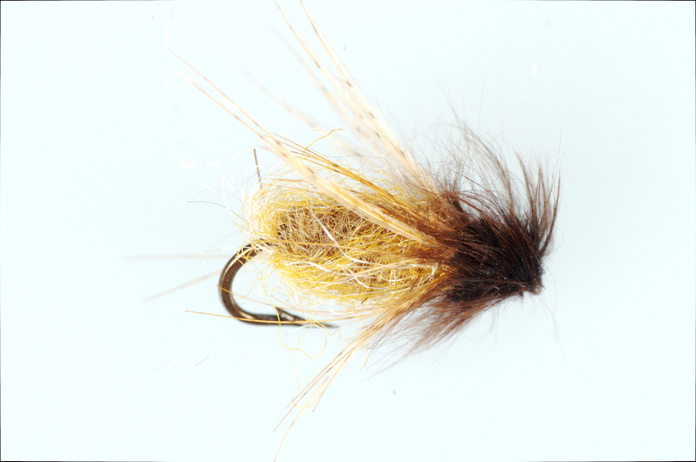
The following is a Gary LaFontaine Sparkle Caddis, actually tied by Gary. I cannot remember who lent me this fly. Whoever it was I owe them a favor. I've been lucky over the years. I've had good photography access to a some very cool fly collections.
Rock Worms
Netting aquatic insects, putting them in a drywall bucket and bringing them home for macro photography is one of my many hobbies. Both the free-crawling Rhyacophila and the Net-Spinning Hydropsychicae Caddis exist in great numbers in Montana trout streams, both as Brown and Green larvae. Both genera tend to prefer cold clean gravel-bottom riffles further up the river system where silty sand bars are rare. I mostly stick to green rather than brown, even though the naturals exist both ways. I'm not sure exactly why but I do. The Green Rock Worm is an important and all-to-often overlooked fly. I know I won't get an argumnent from Bob Jacklin about the Green Rock Worm I . Frans Pott had a Green Rock Worm too, as far back as the 1920s. He might not have called it that but that's what it was. Rock Worms need to be fished deep. You need a relatively heavy bead on the fly itself or weight on the leader, or to fish it behind a Sparkplug. I tie them mostly as #10s and #12s but always I do like to have a few #14s as well.
